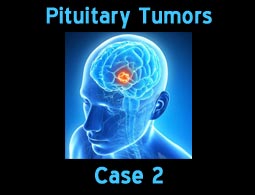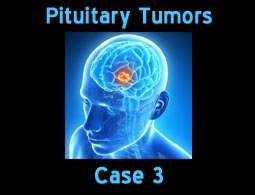Pituitary Tumors Overview:
- Pituitary Tumors are approached by a team of surgeons composed of a Skull Based trained ENT surgeon and a Neurosurgeon.
- Patients are seen and evaluated by each member of the Pituitary Tumor Team, and their case is presented to the Eisenhower Brain Tumor Board for discussion.
- Pituitary tumors are approached using modern neurosurgical technologies:
1- Neuroendoscopy
2- Microneurosurgery
3- Micro-Doppler
4- Radiosurgery
5- Stereotactic Image Guidance
- Pituitary tumors account for about 10-25% of brain tumors.
- The mean age of patients with pituitary tumors is 20-50 years.
- Although symptoms largely depend on the type of the pituitary tumor, however, most patients present with headache.
- Female patients are typically afflicted with Prolactin or ACTH-secreting tumors and males with Growth hormone-secreting tumors.
- Depending on the different studies cited, pituitary tumors can be classified into three groups: benign, invasive adenoma, and carcinoma.
- Adenomas form the largest portion of pituitary tumors with an overall estimated prevalence of about 17%, but only a minority is symptomatic.
- Tumors less than 1 cm are classified as microadenoma and tumors equal or greater than 1 cm in size are called macroadenoma. Macroadenoma have a higher probability of causing visual field defects due to pressing on optic chiasm.
- Prolactin-secreting tumors are the most common pituitary tumors and respond well to non-surgical/medical treatment.
Pituitary Tumors Cases:





















